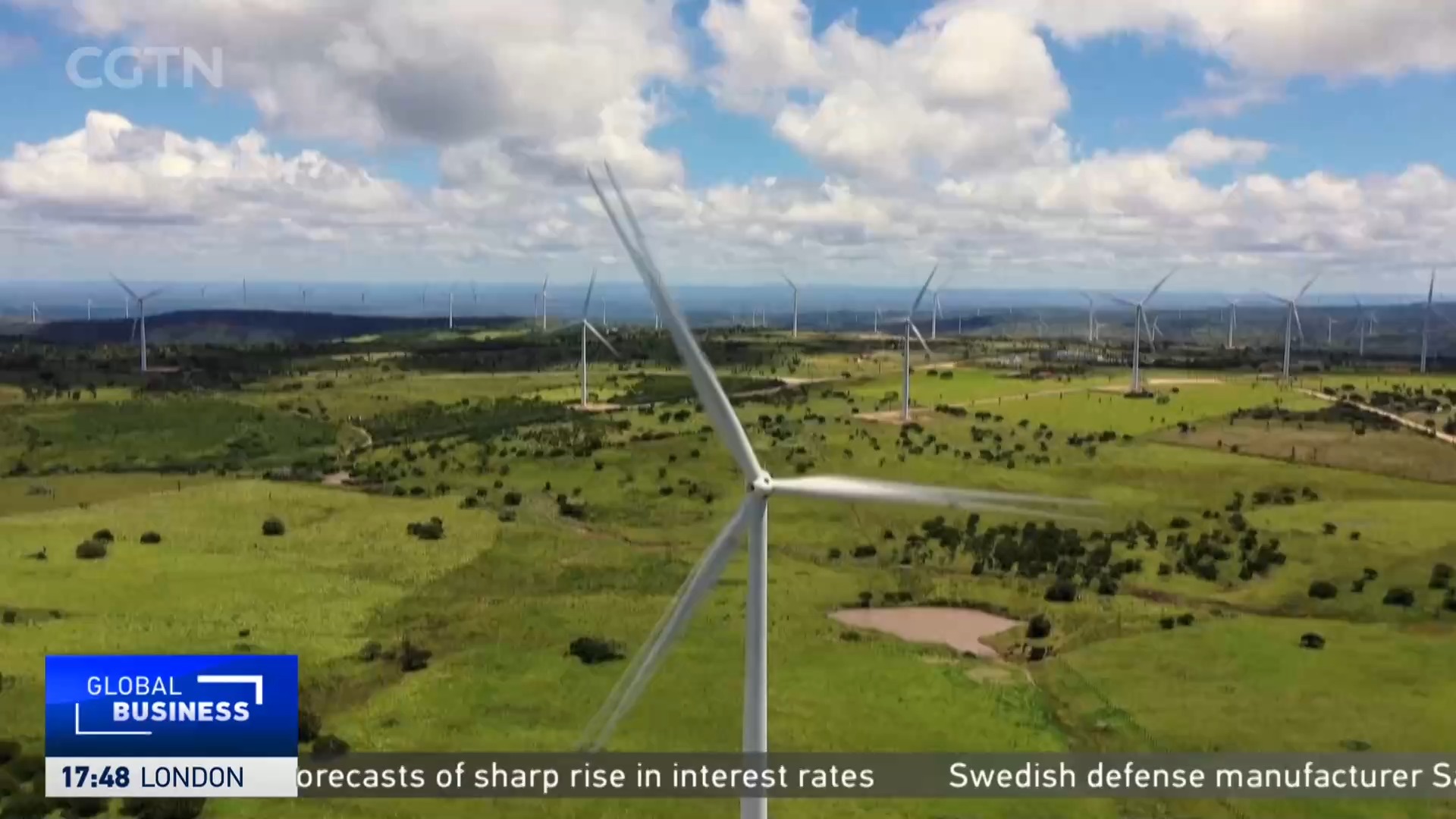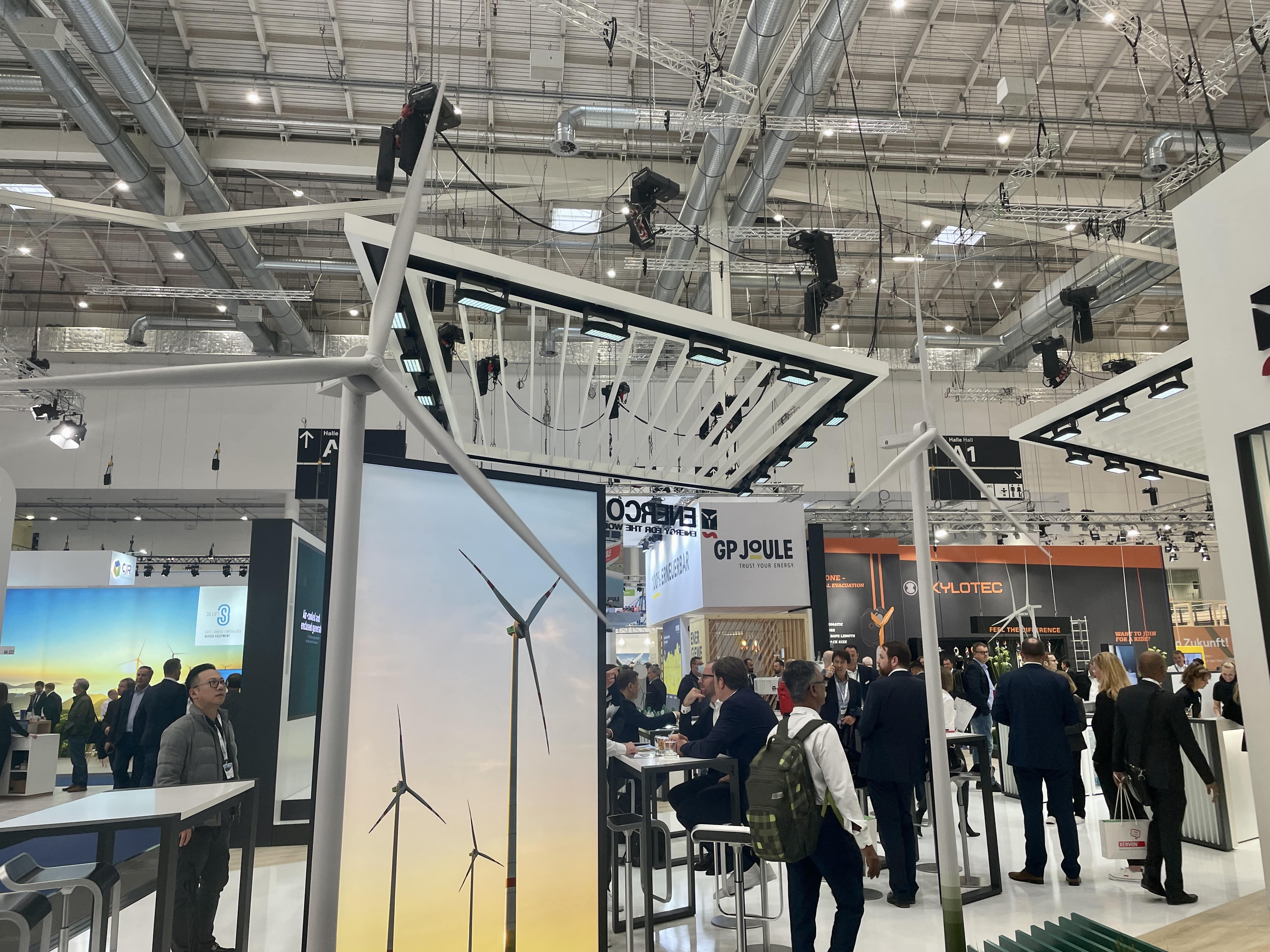03:15

As world governments work to resolve the current energy crisis by diversifying its supplies with a focus on renewables, wind energy is taking the spotlight in the northern German city of Hamburg.
Upwards of 30,000 visitors from around the world, representing all stages of the onshore and offshore wind energy value chain, are gathering there to share innovative ideas and solutions at the Wind Energy Hamburg conference and expo.
Wind energy currently makes up about 7 percent of the world's electricity mix, but the Global Wind Energy Council expects that to grow by 8.5 percent annually, eventually accounting for close to 70 percent of all renewable power production globally.
According to industry experts, wind energy has many advantages over other renewable energy options.
One notable player in the green energy sector is Chinese heavy machinery manufacturer SANY, which has been producing wind turbines since 2008.
In Hamburg, SANY's global product manager for research and development, Hong Yi, told CGTN about the benefits of wind power.
"Especially compared to solar, wind energy is quite beneficial in some specific conditions," he said. "For instance, a wind turbine can produce electricity day and night, especially offshore (where) you have very good wind conditions, and it's close to some areas of industry where demands will be a lot."
Challenges of wind energy
Yet certain challenges are hindering the speed of that growth. For instance, the cost of a wind turbine can exceed $4 million, depending on the megawatts it produces.
In addition, wind farms are typically located in remote, rural areas or tens of miles offshore where mobile connectivity is either reduced or simply unavailable, potentially complicating servicing or maintenance efforts.
There are also environmental concerns, inists Tassos Alefantos, the CEO of Nvisionist, a Greek company which has produced technology that can prevent birds from getting too close to a wind turbine.
"It is important for environmental reasons," said Alefantos, at the Nvisionist stall in Hamburg. "In case of endangered birds, even one lost is a huge problem for the ecosystem.
"There are regulations that oblige the wind operators to minimize the birds' fatality and it is always a case for the operator not to lose the production by having to shut down the wind park."
This could cost producers millions of dollars.

Wind Energy Hamburg lasts for four days. /Natalie Carney/CGTN
Wind Energy Hamburg lasts for four days. /Natalie Carney/CGTN
Offshore wind energy production gaining momentum
There is much attention being placed on offshore wind energy production at the bi-annual event, which had been postponed due to the COVID-19 pandemic.
Last year, offshore wind power added 21.1 gigawatts (GW) to grids internationally and analysts predict that amount will grow by 15 times over the next 10 years, allowing as many as 450 million homes to meet their electricity demands with wind energy.
READ MORE
The life and times of Queen Elizabeth II
Global leaders pay tributes to UK monarch
Mid-Autumn Festival poetry
While SANY has wind turbines both onshore and offshore, Hong says the offshore sector will surely increase for simple size reasons.
"You can build big wind turbines offshore," he explains. "When you go inland, sometimes you are restricted by the area available. We are trying to leverage our manufacturing capability, our construction capability also for the offshore market."
Germany harnessing wind energy potential
Germany has been placing considerable interest into wind power production.
Last month, Berlin signed an agreement with Canada to establish a 'supply corridor' for hydrogen made from wind energy produced off Canada's Maritime-Atlantic coast and shipped to Germany as an alternative to Russian supplies.
Germany and neighboring Denmark have also agreed to boost their offshore wind projects in the Baltic Sea to generate 3 GW each year, enough to power 4.5 million households.
Electricity produced from wind is also becoming more accessible on both corporate and domestic level.
The drive to meet Net Zero climate targets and diversify energy supplies has given rise to innovative and tangible ideas such as those being presented in Hamburg.
Around 35 countries are represented by the 1,400 exhibitors at the four-day expo, which continues until September 30.

